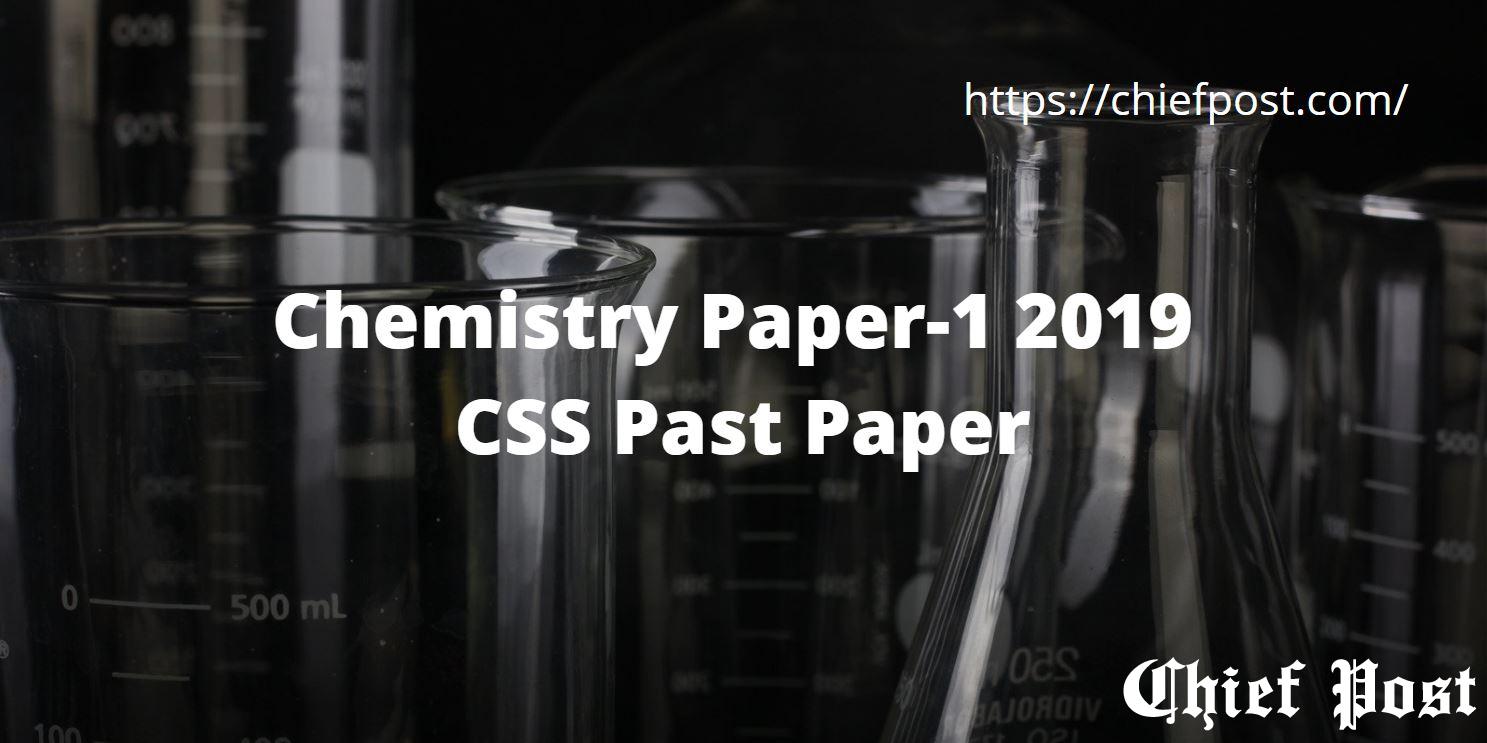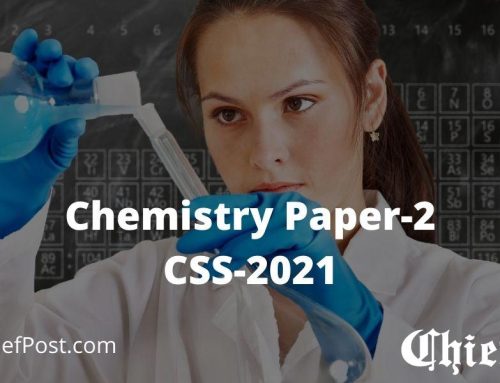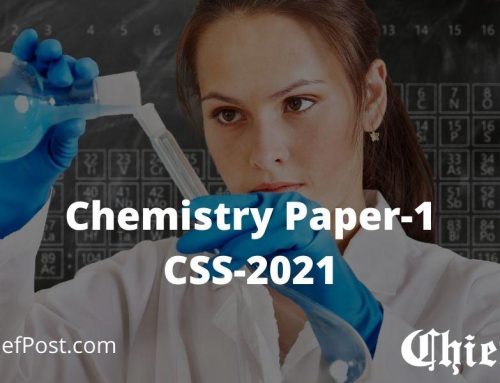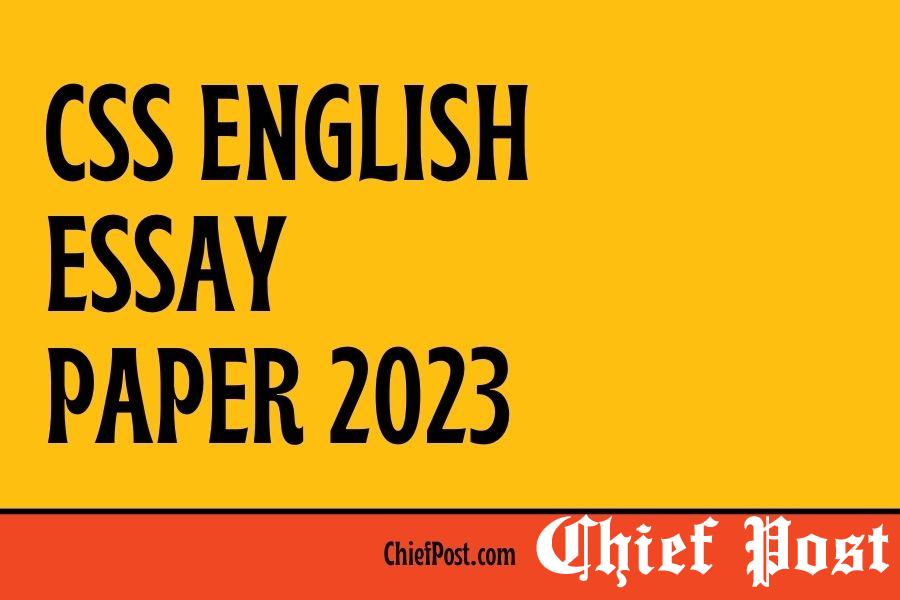
Chemistry Paper-1 2019 — CSS Past Paper
FEDERAL PUBLIC SERVICE COMMISSION
COMPETITIVE EXAMINATION-2019 FOR RECRUITMENT TO POSTS IN BS-17
UNDER THE FEDERAL GOVERNMENT
CHEMISTRY, Paper-1
TIME ALLOWED: THREE HOURS
PART-I(MCQS): MAXIMUM 30 MINUTES
PART-I (MCQS) MAXIMUM MARKS = 20
PART-II MAXIMUM MARKS = 80
NOTE:
- (i) Part-II is to be attempted on the separate Answer Book.
- (ii) Attempt ONLY FOUR questions from PART-II. ALL questions carry EQUAL marks.
- (iii) All the parts (if any) of each Question must be attempted at one place instead of at different places.
- (iv) Candidate must write Q. No. in the Answer Book in accordance with Q. No. in the Q.Paper.
- (v) No Page/Space be left blank between the answers. All the blank pages of Answer Book must be crossed.
- (vi) Extra attempt of any question or any part of the attempted question will not be considered.
PART-II
Q.2.
- (a) Describe the assumption of Bohr’s atomic model. Based on Bohr’s calculation, establish the energy expression of the rotation of electrons in Hydrogen like atomic species. (8)
- (b) Derive de-Broglie’s equation for the dual nature of matter. Apply this equation for microscopic and macroscopic properties of substances. (6)
- (c) What are the postulates of Quantum Mechanics? (6) (20)
Q.3.
- (a) What is Third law of thermodynamics? How it is used to determine the entropies of substance. (7)
- (b) Discuss the isothermal expansion of a gas and derive the equation for the work done due to expansion of a gas. (7)
- (c) Explain the law of corresponding states. (6) (20)
Q.4.
- (a Deduce the rate expression for 2″ order reaction where both the concentration terms are same. What is the half-life period for the 2nd order reaction? (10)
- (b) What is activation energy? How it can be determined? (5)
- (c) Write a note on Transition state theory of reaction rates. (5) (20)
Q.5.
- (a) Develop a relation among phase, component and degree of Freedom. Draw a complete diagram for water system. (10)
- (b) What is catalysis? Differentiate between positive and negative catalysis. (6)
- (c) What is stoichiometry? Explain it with help of examples. (4) (20)
Q.6.
- (a) State and explain Lowry-Bronsted theory and Lewis theory of acids and bases.
In what way Lewis theory differs from Bronsted theory. (8) - (b) — Explain with the help of examples why pH of a buffer solution does not change significantly on small addition of acids and bases. (6)
- (c) What are indicators? How a suitable indicator can be chosen? Discuss. (6) (20)
Q.7.
- (a) Give an account of phenomena of isomerism in co-ordination compound with suitable example.(8)
- (b) — Describe the extraction of thorium from mozite sand. (6)
- (c) Compare the properties of lanthanides and actinides? (6) (20)
Q.8.
- (a) Explain Kohlrausch’s Law? Give its applications. (7)
- (b) What is meant by transport number of ions? Give different methods for determination of transport number. (7)
- (c) What is specific conductance? How it can be determined by using Wheatstone bridge?(6) (20)
**********
Most Popular
Tags
Botany
British History
Business Administration
Chemistry
Competitive Exam
Computer Science
Constitutional Law
Criminology
CSS
CSS-2021
CSS-2024
CSS 2022
Current Affairs
Economics
English
English Essay
English Literature
English Précis and composition
European History
FPSC
Gender Studies
General Science and Ability
Geography
Governance and Public Policies
History of Pakistan And India
International Law
International Relations
IR
Islamic History & Culture
ISLAMIC STUDIES
Islamiyat
Journalism & Mass Communication
Law
Mercantile Law
Pakistan Affairs
Pashto
Past Paper
Philosophy
Political Science
Psychology
Punjabi
Pure Mathematics
Sociology
Town Planning & Urban Management
Zoology










